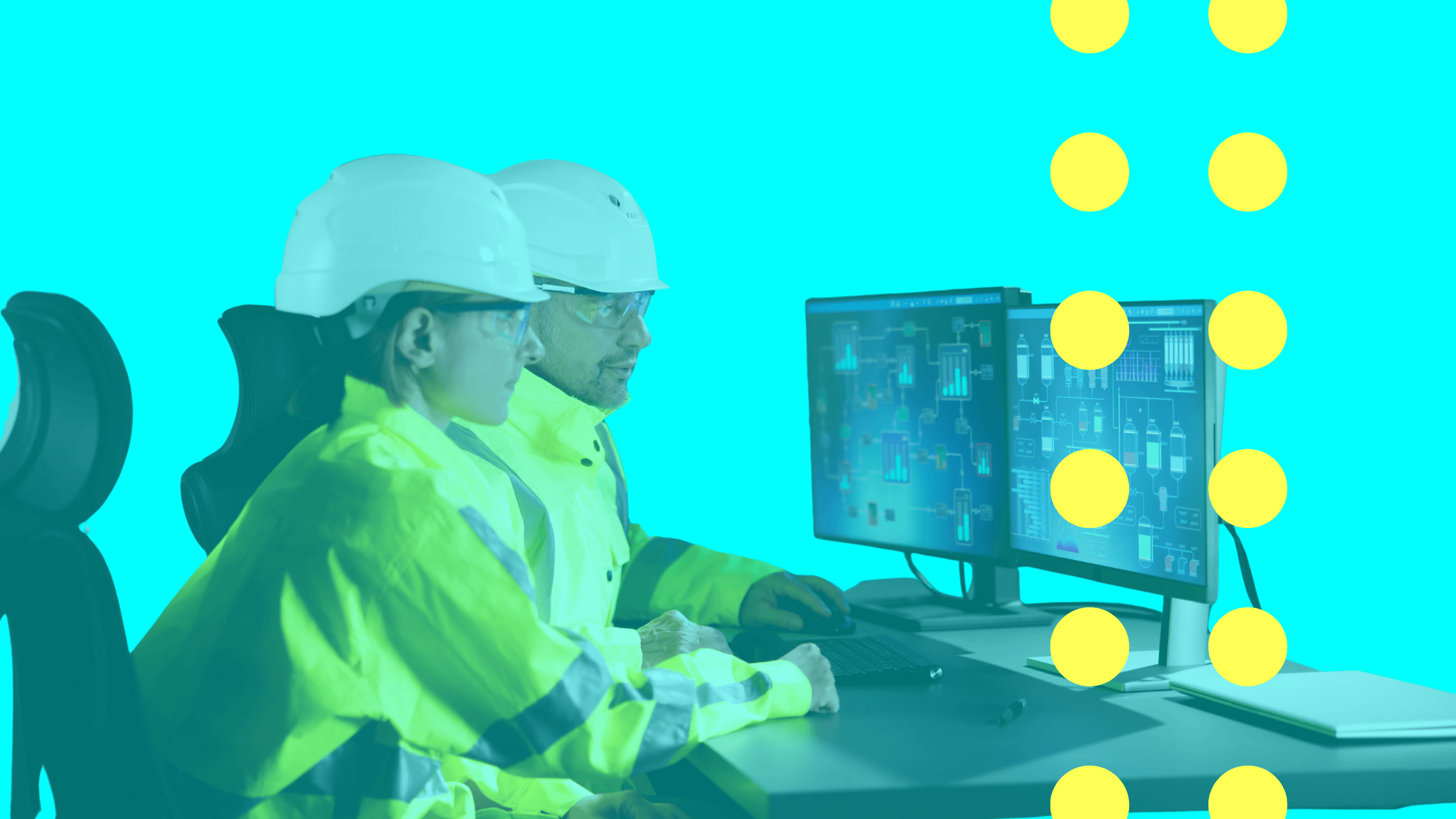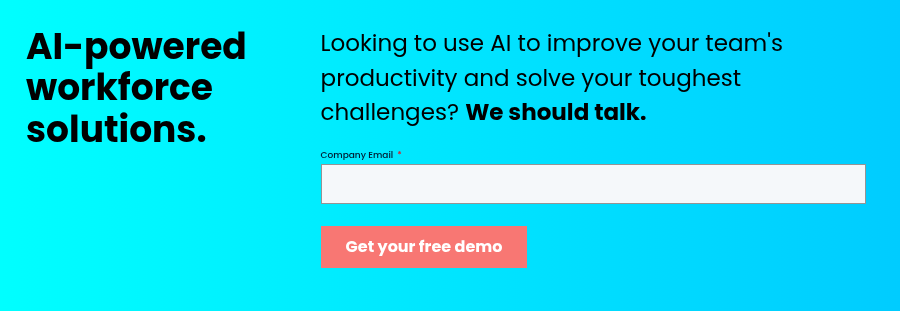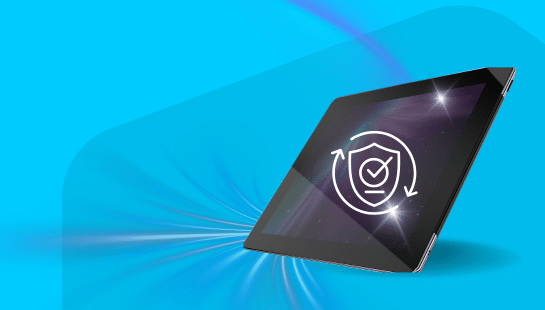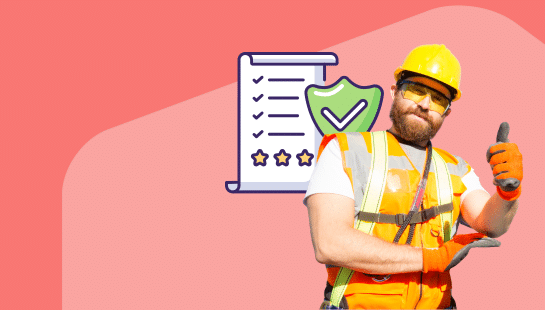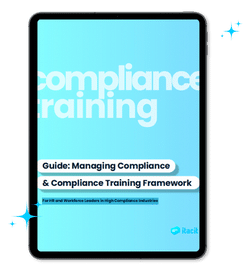Employees feel overwhelmed by their benefit choices. More than 80% struggle with the number of options, and over half don’t fully grasp what their companies offer. This confusion hurts both employee satisfaction and your company’s financial health.
A newer study, published by Accenture shows that companies using AI in HR operations have seen a 30% boost in efficiency. Experts believe AI implementation could help the U.S. save $360 billion yearly. The magic happens through better automation, improved accuracy, and easier access to information.
AI brings remarkable changes to employee benefits programs. Aon’s 2022-2023 Global Wellbeing Survey reveals that better employee wellbeing can improve company performance by 11% to 55%, based on specific focus areas. Companies can achieve these results when AI tailors benefit recommendations for each employee. One company’s AI-powered benefits enrollment system helped employees save $1,200 per year by choosing the right health plans.
AI reshapes benefits administration in many ways. It automates enrollment, provides tailored recommendations, and ensures you follow regulations. These practical applications help cut costs and make the experience better for employees.
The current state of employee benefits management
Managing employee benefits has become a real challenge for HR departments. Right now, six in ten employers feel overwhelmed by the complexity of running their benefits programs. The problem gets worse for companies with 100+ employees, where 69% report major struggles with changing carriers, setting up new coverage, and talking to employees.
Why traditional systems fall short
Old benefits management systems can’t keep up anymore. 41% of American workers say they don’t fully understand any of the employee benefits they picked during their last open enrollment. This confusion results in poor use of benefits, and 70% of employers think employees don’t make the most of their available services and programs.
The same old “one size fits all” benefits system hasn’t changed in decades. This old model doesn’t work for today’s workforce, which now includes five different generations. What’s more, 80% of employees pick health care plans that cost too much. The current tools don’t help people make smart choices.
Time is also a big factor. Nearly three-quarters of employees (73%) look at their benefits for less than an hour during enrollment, and 41% spend under 30 minutes on these vital decisions. Beyond slow enrollment, these systems don’t deal very well with basic tasks like group setups and renewals. This creates a chain of problems throughout the benefits cycle.
The growing complexity of benefits programs
Benefits have become much more complex. HR teams must guide through:
- Multiple regulatory frameworks including ACA, ERISA, HIPAA, FMLA, and ADA
- Healthcare costs going up while budgets stay tight
- Employee needs that vary by age and background
- People wanting more personalized options
This maze of requirements creates huge administrative loads. More than 70% of benefits teams’ time goes to paperwork, leaving little room to plan ahead. 42% of HR teams say they have too many projects, while 73% lack the right tools to work well.
Getting different systems to work together is tough. Over one-third of companies use at least three different vendors for their benefits administration. Compliance remains the top worry for more than one in four employers, yet less than one-third feel ready to handle it.
Seven in ten companies can’t keep up with changing federal, state, or local laws. Small businesses face the biggest challenge – one in three have nobody in-house to run their benefits programs.
The need for smarter, expandable solutions
These challenges explain why 73% of benefits leaders think AI will help with benefits administration. But there’s still uncertainty, as 69% say they don’t know much about AI solutions that could improve benefits.
The room for improvement is huge. AI and automation could take over more than half (52%) of a rewards team’s work, including routine questions and benefits administration. Now, approximately 40% of HR leaders employ AI for benefits administration, and another 40% plan to start soon.
AI can help right away by suggesting the right health plans and making care more accessible. Benefits leaders want to use AI mainly to work better (38%) and save time (29%).
iTacit’s AI HR Assistant shows what’s possible with new technology. It offers round-the-clock help, so employees can better understand and use their benefits. Employees get quick answers about coverage, eligibility, and making the most of their benefits – all in one place.
Old ways of managing benefit costs aren’t working well anymore. Less than one-third of companies say employee cost-sharing and high-deductible health plans work well. AI brings a fresh look at things. It helps analyze what employees want and use, which leads to smarter benefits choices.
Understanding the AI toolkit for HR and benefits
The AI revolution in HR goes beyond fancy tech jargon. It brings practical tools that solve ground problems. 85% of employers are either currently using AI for benefits or plan to do so within the next 12 months. This makes understanding the technology behind these solutions crucial.
Machine learning and deep learning
Machine learning works as the brain behind modern benefits systems. It analyzes patterns and makes increasingly accurate predictions. ML algorithms learn from experience, unlike traditional software. The more data they process, the smarter they become.
ML algorithms in benefits management can:
- Spot patterns in big amounts of employee data
- Make customized recommendations for benefit selections
- Predict employee’s benefit needs based on life events
- Identify ways to save costs
“Understanding, let alone matching, workers’ skills to business needs simply isn’t possible without AI and ML tools that help make sense of all the data,” notes David Somers from Workday.
Deep learning uses artificial neural networks to simulate human-like decision-making. This advanced technology helps systems tackle complex benefits problems that once needed human experts. To cite an instance, see how ML predicts which employees might leave by analyzing surveys and HR records. This enables proactive benefits adjustments to improve retention.
Natural language processing (NLP)
NLP acts like a translator between humans and machines. It helps computers understand and respond to natural human communication. In benefits management, NLP powers conversational interfaces that make complex benefits information available to all employees.
NLP applications in benefits include:
Virtual assistants understand and answer employee questions about coverage and eligibility. Research shows that 99% of business decision-makers believe investing in AI guides to advantages like improved decision-making (41%) and improved employee retention/experience (32%).
NLP makes benefits communications more inclusive. Tools like IBM’s Watson-powered “Benefits Advisor” understand and respond to employee questions in natural language. This puts “a benefits expert in every employee’s pocket”. iTacit’s AI HR Assistant shows how NLP provides 24/7 support to help employees understand their benefits without complex system navigation.
Robotic process automation (RPA)
RPA works like a tireless digital workforce. These software robots handle repetitive, rule-based tasks without breaks or errors. RPA changes the game for benefits teams overwhelmed with administrative work.
RPA bots excel at:
- Copying and entering data between systems
- Verifying claims data
- Processing documents
- Sending notifications and reminders
The impact can be dramatic. One organization using RPA “saved USD 574,289, along with 7,649 manual work hours annually”. This lets employees focus on complex, meaningful work instead of repetitive tasks.
RPA improves the core team’s productivity by automating routine benefits tasks like eligibility verification and document processing. It reduces human error while processing data much faster. A state unemployment agency reported that “RPA has helped the UI Program realize substantial measurable efficiencies, resulting in over 300,000 person hours saved which equates to roughly USD 2.00 million”.
ML/DL, NLP, and RPA together create a powerful toolkit for benefits management. These technologies, when implemented well, free your team from administrative work. This lets them focus on what truly matters: supporting your employees’ wellbeing through thoughtfully designed benefits programs.
How AI automates benefits administration
AI technology is revolutionizing benefits administration. Nearly half of HR departments now use AI tools to handle benefits enrollment and claims processing. These changes have dramatically improved daily operations.

Automated enrollment and eligibility checks
AI-powered systems have transformed how employees choose their benefits. Smart systems help workers select personalized benefits and automatically update when regulations change. This makes the overwhelming open enrollment period much simpler.
AI has completely changed how organizations verify benefits eligibility, a process that used to be slow and prone to errors. Modern AI tools check employee eligibility immediately and create carrier census reports automatically. The numbers speak for themselves:
- Companies save 21 minutes on average for each eligibility verification
- The cost per verification drops from $5.00 to just cents
- Healthcare companies could save $9.80 billion yearly by switching to electronic verification
Smart automation platforms spot errors by comparing enrollment data with master records and fix them automatically. TPAs now receive accurate data streams with minimal human input. iTacit’s AI HR Assistant helps employees quickly find answers about their eligibility, making enrollment much clearer.
Streamlining document processing
Paper-based processes used to slow down benefits administration. AI technologies like NLP, ML, and OCR have changed how HR handles documents.
These advanced systems read and interpret HR documents while pulling out essential information about employee details, plan benefits, and compliance needs. OCR captures data from different formats and adapts it for core systems.
Automated data extraction saves countless hours. Work that once took hours, reviewing documents, entering data, and checking for mistakes, now takes minutes. Automated solutions remove the need for IT teams to manually format or upload data.
Reducing manual errors and delays
AI’s biggest advantage in benefits administration lies in its error prevention capabilities. Old manual methods often led to mistakes, from typing errors to wrong classifications, causing claim denials and administrative problems.
AI systems boost accuracy by:
First, spotting compliance issues right away to prevent costly mistakes. Second, finding odd patterns that might show errors, like dates that don’t make sense. Third, checking data consistently even during busy times when humans might miss things.
Time savings prove impressive too. Studies show AI-powered benefits administration cuts processing time by 30% and reduces data errors by 40%. Organizations using RPA save thousands of work hours each year.
Employees enjoy faster service with fewer problems. AI speeds up claims processing through automation while making better decisions. Best of all, team members can focus on helping people instead of entering data all day.
Benefits administration now focuses more on strategy than paperwork as AI technology advances. This creates happier employees, reduces costs, and delivers better benefits programs.
Personalizing benefits with AI
Companies no longer offer one-size-fits-all benefits packages. 73% of benefits leaders believe AI will have a positive influence on benefits administration. We needed this change because employees want customized options.
Tailored plan recommendations
AI-powered systems get into individual health claims data and suggest benefits that match each employee’s specific situation. These systems analyze demographics, life stage, and past benefit usage patterns to provide recommendations that fit real needs.
Results have been impressive. One company used AI to offer customized recommendations, and its employees saved more than $1,200 annually by selecting optimal health plans.
“By understanding an employee’s individual needs, AI goes beyond just recommending the lowest-cost plan, it helps them choose the right plan for their family,” explains one benefits expert.
Customized recommendations offer these advantages:
- Better use of appropriate benefits
- Higher employee satisfaction with benefits packages
- Improved health outcomes through proper coverage
- Lower costs for employees and employers
AI works quietly behind the scenes. It combines data from multiple sources to refine benefits strategies that line up with workforce needs. This informed approach helps employers create affordable programs that employees value.
Behavior-based nudges and reminders
Subtle prompts have changed how employees participate in their benefits. AI-driven systems send timely nudges that guide people toward smarter decisions.
Behavior-based nudges have revolutionized retirement planning. Programs like Save More Tomorrow automatically increase employee contributions. These programs helped participants boost their savings rates from 3.5% to 13.6% in less than four years.
Google and Credit Suisse’s experience proves thoughtful defaults work. After increasing default contribution rates, only two out of 8,500 employees opted out.
AI enables proactive health benefit interventions through nudges, reminders, and coaching. Employees receive customized communications right when they need information for healthcare decisions.
To name just one example, Empyrean’s AI platform provides “proactive guidance, tips, and reminders” that help employees maximize their benefits. AI detects when someone might need specific benefits based on life events and delivers relevant information automatically.

Real-time support through AI assistants
AI-powered virtual assistants have revolutionized employee benefit interactions. These tools give instant answers to questions employees might hesitate to ask.
iTacit’s AI HR Assistant shows this approach in action. It offers round-the-clock support to help employees understand their benefits without complex system navigation. Employees often hesitate to ask simple questions like “What is a deductible?”. These questions are significant for making informed decisions.
These assistants do more than answer FAQs. iTacit, is an AI-powered assistant that is fully aware of each employee’s plan documents and employer-provided benefits and offers customized guidance.
Empyrean’s digital assistant “personalizes responses using participant data” and can “explain benefits details and terminology” in multiple languages.
Benefits go beyond convenience. Virtual assistants monitor patient health, suggest treatments, and send follow-up reminders. They create interactive conversations that build benefits literacy gradually.
AI-driven personalization grows more sophisticated each day. Most benefits leaders (73%) believe AI will positively affect benefits administration. Many still learn about its capabilities. People who understand AI’s potential are its strongest supporters; 92% of knowledgeable leaders believe AI will have a positive impact on benefits management.
Improving access and engagement with AI tools
Benefits information should be accessible to employees regardless of office hours or language barriers. AI solutions are changing this by making benefits support accessible to employees whenever and wherever they need it.
24/7 virtual assistants and chatbots
HR teams no longer need to handle every benefits question. AI-powered chatbots now provide instant, round-the-clock support for employee benefit queries. These digital assistants handle everything from explaining coverage details to helping employees through complex enrollment processes.
These tools are valuable because they know how to:
- Answer frequently asked questions about benefits coverage and eligibility
- Guide employees through enrollment steps
- Provide personalized recommendations based on individual profiles
- Help with claim submissions and status questions
Benefits go beyond convenience. These tools help employees make better-informed decisions about their benefits by providing immediate and accurate information. Companies see substantial efficiency gains, those using AI to improve decision-making reported a 79% positive change in company culture.
“Our AI is working 24/7 so you don’t have to be,” notes one benefits platform. This shows how these tools free HR teams from answering the same questions repeatedly. Organizations that utilize AI report their employees save time navigating their benefits.
Multilingual and inclusive communication
Language barriers cost businesses millions annually, more than just an inconvenience. AI has made multilingual support achievable, even for smaller teams.
Modern AI tools use three key technologies to deliver inclusive communication:
- Natural language processing (NLP) that understands intent in any language
- Generative AI that creates natural, contextually appropriate responses
- Machine learning that improves accuracy over time
Benefits platforms can detect a user’s language automatically and respond appropriately. Some systems route requests based on language, sending French inquiries to your Paris team, to cite an instance.
AI supports global workforces through translation between languages. Employees can access benefits information in their preferred language, which encourages a sense of inclusion and belonging. Employees who bring their authentic selves to work are happier, more motivated, and less likely to quit.
iTacit’s AI HR Assistant in action
iTacit’s AI HR Assistant shows these technologies’ ground effects. Company policies, SOPs, and training documents are now at employees’ fingertips, instantly and securely.
Results prove its worth. 87% of users say the AI Digital Assistant helped answer their questions easier than before. Management teams saved 4.5 hours weekly they previously spent answering employee inquiries.
iTacit’s solution differs from generic chatbots. It pulls answers from your company’s verified content and displays what’s relevant to each role, removing outdated information and compliance risks. Employees always receive current answers that match existing policies, which improves accuracy and compliance.
Built-in dashboards reveal what questions employees ask, helping identify gaps in training and policy clarity. This data forms the foundation to improve your benefits communication strategy.
These AI assistants connect training to ground action with quick, searchable support. On top of that, they reduce compliance risk by making the right process accessible, whatever an employee’s location.
We have a long way to go, but we can build on this progress as AI reshapes benefits management. Better access and engagement are becoming essential parts of a modern benefits strategy.
Using predictive analytics to manage costs
Predictive analytics is reshaping how companies handle their benefits costs. A recent study shows 85% of employers are either using or plan to use AI for benefits in the coming year. These predictive capabilities now serve as the foundations of financial strategy.
Forecasting high-cost claims
Healthcare expense prediction has become a game-changer before costs pile up. The healthcare industry follows the “5/50 rule” – 5% of the population is responsible for 50% of all healthcare costs. This concentration makes accurate predictions a great way to get insights.
AI algorithms examine historical claims data, clinical research, pharmaceutical trends, and metrics from wearable devices to project cost patterns. HR teams can prepare for financial outcomes as these models test various scenarios.
Companies using predictive analytics have seen remarkable results:
- 67% reduction in operational expenses
- 60% increase in sales
- Substantially improved profitability
These tools detect unusual patterns that might point to fraud or billing errors, adding another layer of cost control. iTacit’s AI HR Assistant blends with these predictive systems to keep managers updated about cost trends without needing deep technical expertise.
Identifying at-risk employees early
AI shows its true value by detecting potential health issues before they become serious medical conditions and major expenses. Advanced algorithms create employee profiles that help spot warning signs.
The systems analyze multiple factors at once to create risk profiles that would be impossible to build by hand. Case managers can then coordinate care inside and outside hospitals, help with treatment plans, and reduce costs.
This approach goes beyond just saving money, it helps improve health outcomes. Companies can roll out targeted wellness programs for specific health concerns when they spot high-risk employees early. While privacy protection remains crucial, both employees and employers benefit substantially from early intervention.
Optimizing plan design with data
Data analysis has transformed how companies build their benefits packages. AI tools help employers assess workforce needs and preferences, which guides more informed decisions about coverage.
A company showed this approach after buying another business. They used generative AI to analyze survey responses in real time and found very different attitudes toward benefits between their original and new employees. This insight helped them adjust their medical plan design accordingly.
Advanced analytics combined with these insights help employers:
- Match individual needs with appropriate solutions
- Cut out waste from underused benefits
- Spot future healthcare trends before they hit budgets
- Fine-tune premium structures and deductible levels
Making use of information this way helps balance cost control with employee satisfaction. Breaking down population segments and analyzing sentiment reveals opportunities in diverse workforces, which enables more targeted benefits strategies that work for everyone.
Ensuring accuracy and compliance with AI
AI tools do more than just automate and personalize – they help prevent mistakes and compliance problems from getting pricey. Smart fraud detection systems can spot suspicious activities within milliseconds. This saves companies from major financial losses.
Detecting fraud and anomalies
AI stands out at finding irregularities in benefits administration. Smart algorithms study transaction patterns and catch anomalies that human reviewers often miss. These systems pick up unusual claim amounts, spot mismatched details, and identify suspicious patterns in submissions.
The money saved is substantial. Companies that use AI for fraud detection see:
- 67% reduction in operational expenses
- Smaller windows for fraudulent behavior
- Better accuracy with fewer false alarms through self-learning algorithms
ITacit’s AI HR Assistant helps catch potential compliance gaps early. It analyzes employee questions and raises red flags before problems grow bigger.
Maintaining regulatory compliance
Companies still worry about regulatory compliance. Less than one-third feel ready to handle it properly. AI helps bridge this gap by watching regulatory changes in HIPAA, ERISA, GDPR, and CCPA frameworks.
Employee Benefit Plan (EBP) audits work better with AI oversight. The system pulls and labels relevant information from plan documents automatically. It checks plan terms and participant eligibility across large groups of people.
Human judgment still matters in compliance decisions. AI should support decisions rather than make final calls, even in critical situations. This blend of AI efficiency and human oversight creates the best results.
Data governance and audit trails
Good data governance supports every AI-powered benefits system. Poor governance puts sensitive information at risk. Data security breaches cost companies $4.45 million on average.
AI systems make governance stronger through:
Audit trails track all compliance activities automatically. This creates clear records of system actions. The system also masks sensitive data with realistic but fake information. Teams can test systems without exposing real employee data.
Smart companies create clear data governance roles. They assign data stewards and compliance officers specific duties. These guidelines help AI systems stay within proper limits.
Data governance becomes more critical as AI grows in benefits management. Companies face average penalties of $14.80 million for breaking data privacy laws. Protecting employee data serves both ethical and financial purposes.
Ethical use of AI in employee benefits
AI brings groundbreaking tools to benefits management, but ethical guidelines must shape how we use them. Deploying AI in employee benefits raises important ethical questions that need careful thought and planning.

Avoiding bias in algorithms
AI systems work only as fairly as their training data allows. Historical data often contains biases about gender, race, age, and other characteristics. These biases can make algorithms unfair and even make inequalities worse. This creates big risks in benefits administration.
Companies must train their algorithms with diverse data sets to curb bias. Teams from different departments should check AI models together. This approach helps teams spot existing inequalities and make algorithms better.
Many organizations now run ongoing risk management programs. They watch AI systems closely to find and reduce bias throughout their use. Regular checks make sure AI tools stay fair, with built-in protections against unfair practices.
Human-in-the-loop decision-making
AI should improve human decisions, not take over completely. People need to oversee critical benefits decisions. iTacit’s AI HR Assistant shows this balance well, it gives quick information but leaves complex decisions to human judgment.
A governance council watching over AI in HR helps build in human oversight. This council should have people from HR, legal, and IT teams who bring different viewpoints to AI governance.
Human reviewers understand context and ethics in ways AI cannot. People have the moral judgment to ensure AI decisions match society’s values. They set boundaries and review results to stop discrimination.
Protecting employee data privacy
HR deals with lots of sensitive information, so data security matters most. New studies show that 85% of employees worry about their personal data security as AI use in HR grows.
Strong data protection must include:
- Getting clear permission before collecting employee data
- Being open about how AI handles information
- Using strong encryption and access controls
- Collecting only needed data and making it anonymous when possible
Data breaches typically cost $4.45 million per incident. This makes protection both an ethical duty and a financial must. Companies can share some risk with service providers, but they always remain responsible for data privacy.
Teaching staff how to use AI correctly matters just as much. A good training program helps employees learn proper AI system use. This reduces the chance of mistakes with sensitive information.
Trust forms the foundation of successful benefits programs. Even the best AI tools will struggle without proper safeguards and employee confidence.
Conclusion
AI has changed the way companies manage employee benefits completely. This piece shows how AI turns administrative hassles into strategic wins through automation, customized solutions and informed decisions.
Companies see impressive results when they use AI for benefits. Organizations that implement AI in HR functions see a 30% boost in productivity. AI-powered benefits administration also reduces processing time by 30% and cuts data errors by up to 40%. These numbers paint a clear picture: AI brings real business value.
The future looks bright for AI in benefits management. About 40% of HR leaders already use AI to manage benefits, and another 40% plan to start soon. Companies can’t risk falling behind this trend.
AI’s real strength comes from solving multiple problems at once. AI systems handle boring tasks automatically, spot mistakes humans might miss, and give employees personal guidance. These three advantages explain why 92% of experienced benefits leaders think AI will make benefits management better.
AI becomes more valuable because it learns and gets better over time. Unlike regular software, AI systems keep improving their suggestions and processes as they gather new information. Your benefits program gets smarter with each interaction.
The reasons to adopt AI grow stronger daily. Companies save thousands of work hours yearly through automation and make employees happier too. One company that used AI for benefits enrollment helped its employees save more than $1,200 each year by choosing better health plans.
But technology alone won’t fix broken benefits strategies. AI makes good practices better when you implement it thoughtfully. Successful organizations find the right balance between powerful AI tools and human oversight, especially for sensitive decisions.
Data privacy and ethics must stay top priorities throughout your AI implementation. Strong data protection measures, including clear consent and robust encryption, help build employee trust – the foundation of any good benefits program.
iTacit’s AI HR Assistant shows this balanced approach well. It offers round-the-clock support while keeping appropriate human involvement. The tool gives employees instant access to company policies and benefits information, and 87% of users say they find answers more easily now.
Benefits will keep evolving, but one thing stays clear: AI-powered solutions offer the flexibility needed to handle change well. Organizations can cut costs, improve employee experience, and stay compliant all at once – something traditional systems could never achieve.
AI isn’t just tomorrow’s solution for benefits management – it’s already changing how leading companies work today. Smart organizations don’t ask whether to adopt AI for benefits management; they ask how quickly they can implement these solutions to stay ahead.
